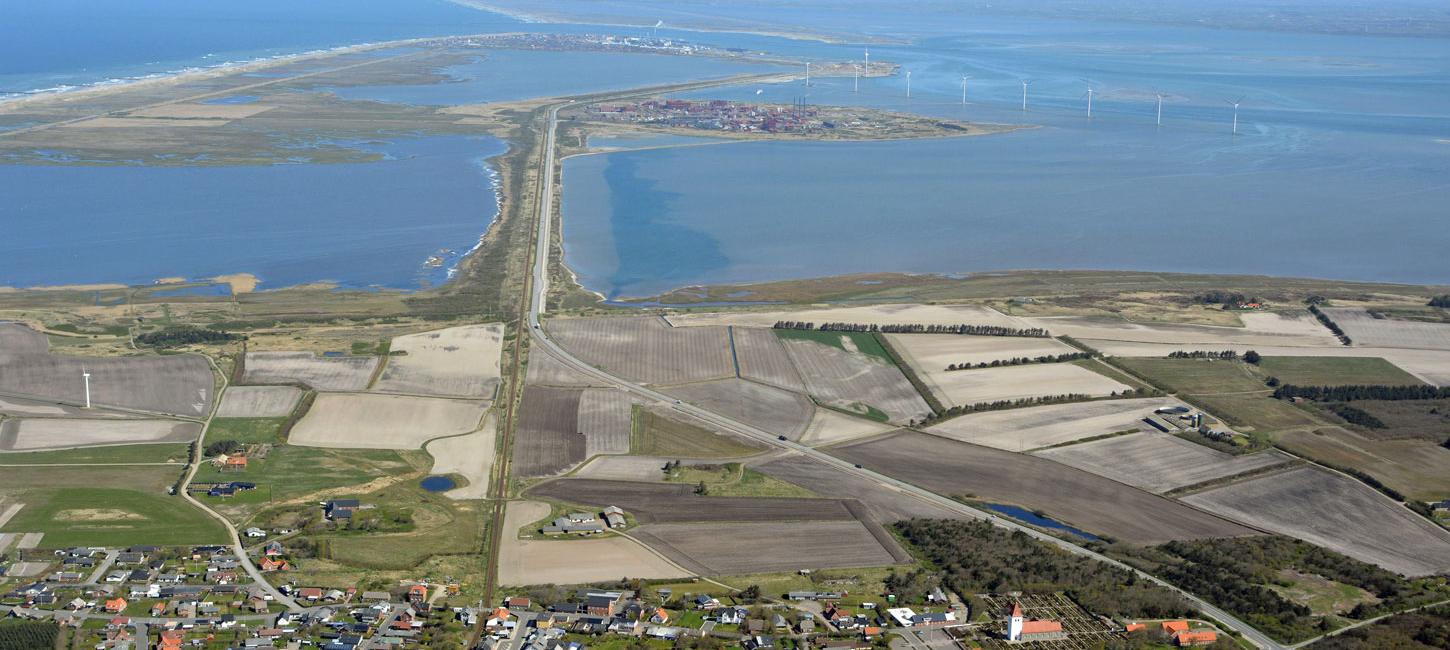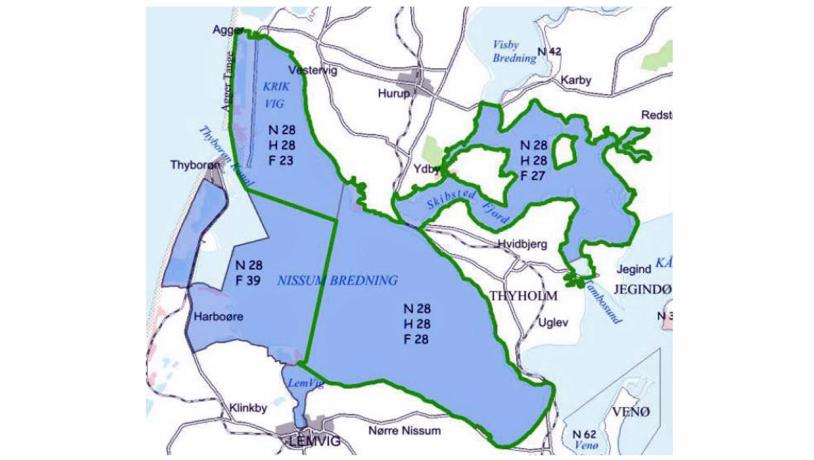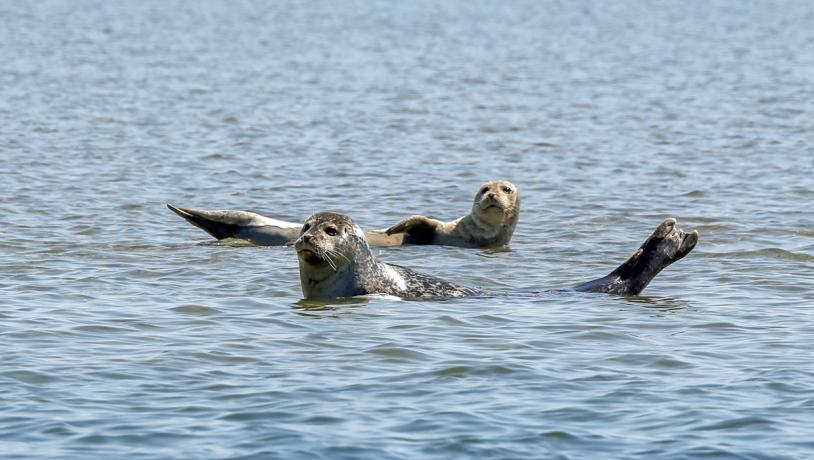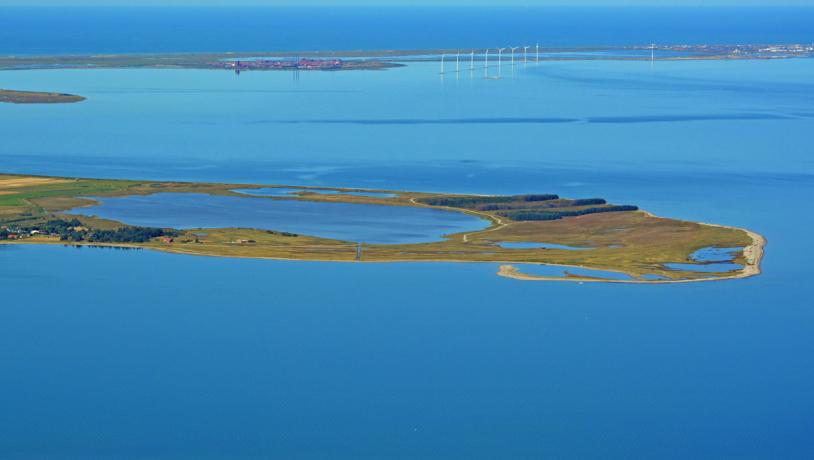
N40 Natura 2000-Site no. 28 Agger Tange, Nissum Bredning, Skibsted Fjord and Agerø
This is the largest single natural area of international significance in Geopark West Jutland. About 85% of the area is maritime with considerable value for recreation and communication.

Photo:Geopark Vestjylland
Largest Cohesive Nature Area
Natura 2000 area no. 28 comprises 33.165 ha and is therefore by far the largest nature area in the geopark. Agger Tange (spit), Aggerø Island and part of Skibsted Fjord, however, lie outside the limits of the geopark. Of the types of nature included by Natura 200 here it is the shallow fjords with extensive sandbanks, reefs and tidal areas in Nissum Bredning and tidal meadows on Thyholm and Jegindø island that are in focus. Bird protection area F39 that comprises Harboøre Tange, Plet Enge, Sønderholm Enge and lake Gjeller Sø has large areas of coastal lagoons and tidal meadows that are also significant. The presence of otters is part of the reason for the Natura 2000 nomination. They have been registered at Egebjerg Bæk, Hellerød Kær on the eastern side of Thyholm and in the Gudum River.

Photo:Henrik Winther Krogh
Birds and Seals
The rich bird life provides the opportunity for many interesting experiences. The Natura 2000 nomination inside the area of the geopark is largely due to the presence of breeding dunlins, ruffs (not seen breeding here since 2005), avocets and little terns. Breeding avocets are increasing in numbers, possibly because of grazing in its breeding areas. The numbers of avocets on Harboøre Tange, however, have decreased in the autumn months. The population of breeding dunlins has also decreased at Harboøre Tange that used to be one of their favoured sites in the early 1980s. This is probably due to overgrowth of the meadowlands where they build their nests. Harboøre Tange is considered to be a favourable site for breeding ruffs and dunlins. Amongst the migrating birds that can be seen in the spring and autumn are large numbers of pink-footed geese, barnacle geese, light-bellied brent geese and avocets that are the main reason for the nomination as a Natura 2000 area. Many guests are keen to experience seals and guided tours to places where they can be seen are very popular. The population of harbour seals in Limfjord has increased considerably over recent years and observations have been made of a few grey seals.

Photo:Lemvig.eu
Possibilities for the Aspiring Geopark
Within the area there are several recreational routes and experience points that the geopark, together with the Danish Nature Agency and municipalities, as well as landowners, will promote. The geopark will contribute to develop new facilities and support geotourism in the area, as well as to support projects to improve the natural environment.